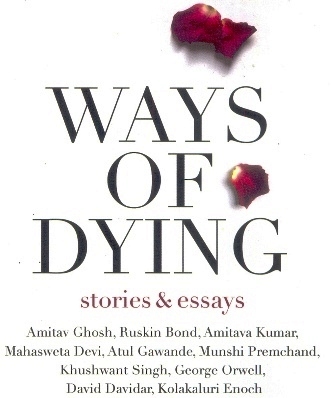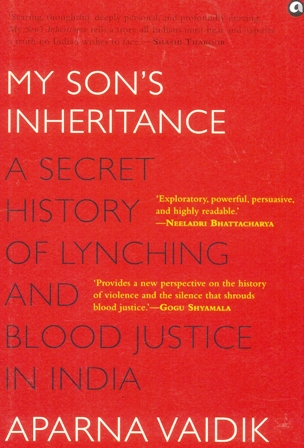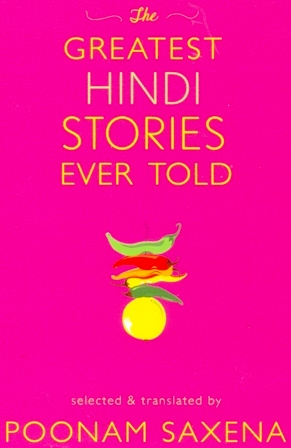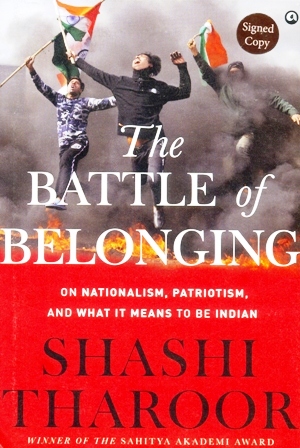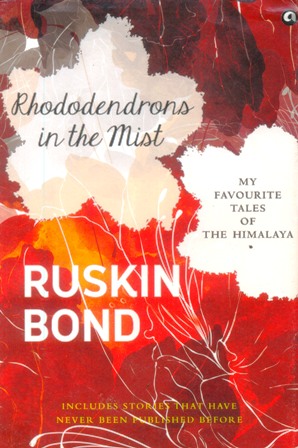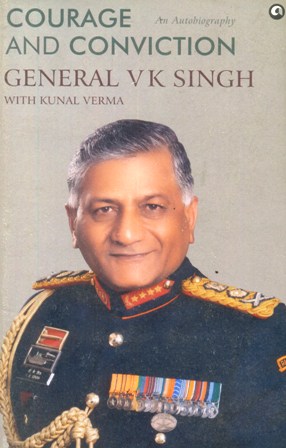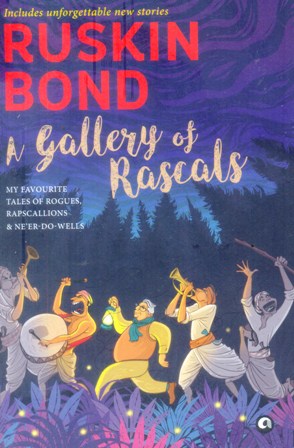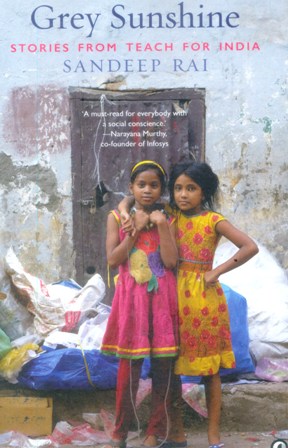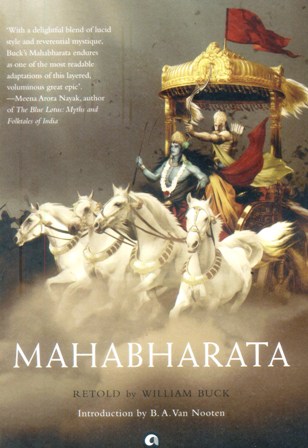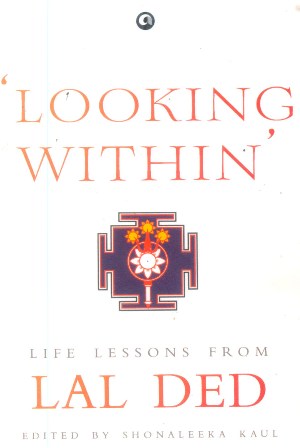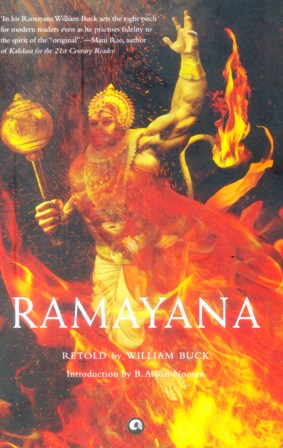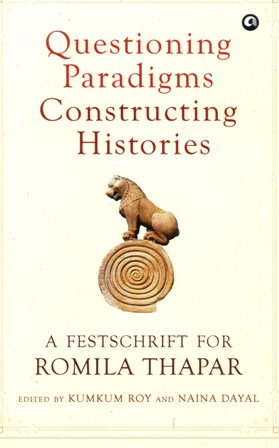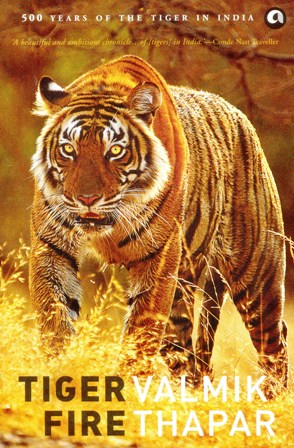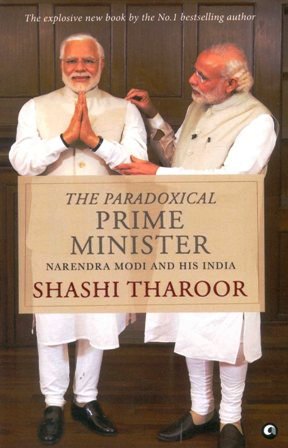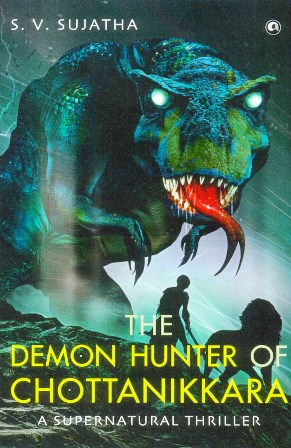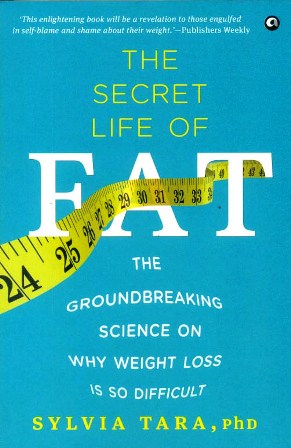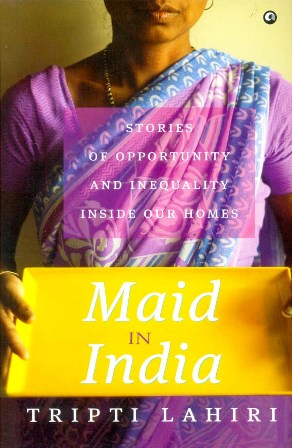-
Ways Of Dying Stories And Essays
Amitav Ghosh George Orwell Khushwant singh Ruskin Bond Mahashweta Devi Munshi Premchand Amitava Kumar Atul GawandeOne of the meanings of the word ‘olio’ is ‘a miscellany’. The books in the Aleph Olio series contain a mélange of the best writing to be had on a variety of themes, and present aspects of India and Indian life in ways that have seldom been seen before. Ways of Dying comprises stories and essays of deep insight into an inevitable part of life—death. The pieces in the book include Amitav Ghosh on the assassination of Indira Gandhi and its aftermath, Ruskin Bond on memories of his father’s funeral, Amitava Kumar on how it is necessary to find comfort and solace in the midst of profound grief, Mahasweta Devi on murder and revenge in rural India, and Atul Gawande on assisted suicide and what doctors fear the most when faced with the mortality of their patients. Elsewhere in the anthology, the reader will find one of Munshi Premchand’s greatest stories, ‘The Shroud’, a peerless meditation on the hypocrisies and feigned grief of dysfunctional families on the death of a family member, balanced by Khushwant Singh’s poignant essay on the death of his beloved grandmother. Rounding out the selection are George Orwell on the complex reasons that often lead to innocent blood being shed, David Davidar on the sadness and turmoil that whirls through a family upon the death of a patriarch, and Kolakaluri Enoch on the tragic death of a young girl.
-
My Son's Inheritence A Secret History Of Lynching
My Son’s Inheritance: A Secret History of Lynching and Blood Justice in India is a provocative and disturbing examination of the history of lynching in the country. Aparna Vaidik’s investigation traverses several centuries and offers powerful insights into the phenomenon. She demonstrates how violence is secretly embedded in our myths, folklore, poetry, literature, and language, and is therefore invisible. She delves deep into family history to further illuminate how widespread violence is in Indian society. Framing her narrative as a message to her son, she acquaints him with his ancestors—those who abet and carry out lynching as well as those who are lynched. In this way, her son embodies both the violator and the violated, much like the country in which he will come of age. She lays bare the heritage of violence bequeathed from generation to generation and disabuses us of the myth that non-violence and tolerance are the essence of Indian culture. She argues that the perpetrators of violence are not just the state, the rulers, the police or the army but all of us who, through our silence and indifference, foster and perpetuate violence in India. My Son’s Inheritance is a groundbreaking exploration of the phenomenon of lynching and the larger culture of violence that invests the social and political fabric of the country.
-
The Greatest Odia Stories Ever Told
The greatest Odia stories ever told showcases odia’s greatest storytellers ranging from literary masters such as fakir Mohan Senapati, Gopinath Mohanty, Reba Ray and man's Das to contemporary stalwarts like Pratibha Ray and nrusingha Tripathi, among others. A young woman who was dragged away by a crocodile mysteriously resurfaces after a decade in Manoj das’s ‘Mrs crocodile’; a pet goat let loose in a government Office causes amusement and chaos in Gopinath Mohanty’s ‘the solution’; Godavari's mahapatra’s ‘maguni’s bullock cart’ deals with the anxieties of a bullock cart driver stuck between the trappings of traditions and modernity stories in this anthology traverse an exciting range of themes from fantasy to reality and bone-chilling horror to rib-tickling humour. Timeless, evocative and striking, the greatest Odia stories ever told offers a rich selection of stories that are unrivalled in their range, style and complexity. Selected and translated by leelawati Mohapatra, Paul st-pierre and K. K. Mohapatra, the twenty-four stories in this volume showcase the finest short fiction in Odia literature.
-
The Greatest Hindi Stories Ever Told
The twenty-five stories in The Greatest Hindi Stories Ever Told represent the finest short fiction in Hindi literature. Selected and translated by editor, writer, and translator Poonam Saxena, and ranging from early literary masters of the form such as Premchand, Chandradhar Sharma Guleri, BhishamSahni, HarishankarParsai, Mannu Bhandari, and Shivani to contemporary greats such as AsgharWajahat, Uday Prakash, Sara Rai, and others, the collection has stories of darkness, hope, triumph, anger, and irony. In Premchand’s ‘The Thakur’s Well’, ‘low-caste’ Gangi struggles to find drinking water for her ill husband; in ‘The Times Have Changed’ by Krishna Sobti, the matriarch Shahni bids a heart-breaking farewell to her village during Partition; Krishna BaldevVaid’s ‘Escape’ is a telling story about women’s yearning for freedom; Yashpal’s ‘Phoolo’s Kurta’ is a sharp commentary on child marriage and notions of female modesty; in BhishamSahni’s ‘A Feast for the Boss’ and Usha Priyamvada’s ‘The Homecoming’, ageing parents find themselves tragically out of sync with their family; Amarkant’s ‘City of Death’ looks at the fragile thread that holds together communal peace; PhanishwarnathRenu’s ‘The Third Vow’ features the lovable bullock-cart driver Hiraman; Bhagwaticharan Varma’s ‘Atonement’ and HarishankarParsai’s ‘The Soul of Bholaram’ are scathing satires; and ‘Tirich’ by contemporary writer Uday Prakash is a surreal tale—these and other stories in the collection are compelling, evocative, and showcase an unforgettable range of brilliant styles, forms, and themes.
-
Plassey The Battle that Changed the Course Of Indi
The Battle of Plassey, fought on 23 June 1757, changed the course of Indian history forever. When the short, sharp hostilities between the forces of the nawab of Bengal, Siraj-ud-daulah, and East India Company troops led by Robert Clive, an ambitious soldier of fortune, ended, Britain was on its way to becoming the dominant force in the region. The eighteenth century was a time of great political churn in the subcontinent. After the death of Emperor Aurangzeb, the Mughal empire began to slowly fracture. In the east, the nawabs of Bengal, who ruled in the name of the Mughals, took the opportunity to break free. By the middle of the century, Siraj-ud-daulah succeeded his grandfather, Alivardi Khan, to the throne of Bengal. The young nawab clashed frequently with the Company as it looked to aggressively expand and safeguard its interests. Their skirmishes led inexorably to Plassey, a decisive battle in a mango orchard by the banks of the Bhagirathi-Hugli. But what was Plassey all about, besides a young nawab who stood in the way of a company’s business plans and a country’s dreams of conquest? Was it really a battle or was it won before it began? What were the politics of the time that permitted Plassey? Why did the British so desperately want Bengal? Who were the faces beyond a callow Siraj and a crafty Clive, the two main combatants? What are the stories behind the spurned general, the ambitious and hateful aunt, the rude and covetous cousin, the insulted banker, the grasping merchant? And how was—is—Plassey seen? By the victors and the vanquished? The colonizer and the colonized? Why does Plassey remain such a fascinating story even today? Using multilingual sources and a multidisciplinary approach, Sudeep Chakravarti answers all these questions and a myriad others with great insight and nuance. Impeccably researched and brilliantly told, Plassey is the best account yet of one of the turning points in Indian history.
-
Akbar The Great Mughal
Abu’l Fath Jalal-ud-din Muhammad Akbar, the third Mughal emperor, is widely regarded as one of the greatest rulers in India’s history. During his reign, the Mughal Empire was one of the wealthiest in the world, and covered much of the Indian subcontinent. Although there are dozens of books on the empire, there are surprisingly few full-length accounts of its most remarkable emperor, with the last major study having been published over two decades ago. In Akbar: The Great Mughal, this outstanding sovereign finally gets his due, and the reader gets the full measure of his extraordinary life. Akbar was born on 15 October 1542 and after a harrowing childhood and a tumultuous struggle for succession following the death of his father, Humayun, became emperor at the age of thirteen. He then ruled for nearly fifty years, and over the course of his reign established an empire that would be hailed as singular, both in its own time and for posterity. In this book, acclaimed writer Ira Mukhoty covers Akbar’s life and times in lavish, illuminating detail. The product of years of reading, research, and study, the biography looks in great detail at every aspect of this exceptional ruler—his ambitions, mistakes, bravery, military genius, empathy for his subjects, and path-breaking efforts to reform the governance of his empire. It delves deep into his open-mindedness, his reverence towards all religions, his efforts towards the emancipation of women, his abolishing of slavery and the religious tax—jiziya—and other acts that showed his statesmanship and humanity. The biography uses recent ground-breaking work by art historians to examine Akbar’s unending curiosity about the world around him, and the role the ateliers played in the succession struggle between him and his heir, Prince Salim (who became Emperor Jahangir). Beautifully written, hugely well-informed, and thoroughly grounded in scholarship, this monumental biography captures the grandeur, vitality, and genius of the Great Mughal.
-
The Battle Of Belonging On Nationalism Patriotism
There are over a billion Indians alive today. But are some Indians more Indian than others? To answer this question, one that is central to the identity of every man, woman, and child who belongs to the modern Republic of India, eminent thinker and bestselling writer Shashi Tharoor explores hotly contested ideas of nationalism, patriotism, citizenship, and belonging. In the course of his study, he explains what nationalism is, and can be, reveals who is anti-national, what patriotism actually means, and explores the nature and future of Indian nationhood. He gives us a clear-sighted view of the forces working to undermine the ‘idea of India’ (a phrase coined by Rabindranath Tagore) that has evolved through history and which, in its modern form, was enshrined in India’s Constitution by its founding fathers. Divided into six sections, the book starts off by exploring historical and contemporary ideas of nationalism, patriotism, liberalism, democracy, and humanism, many of which emerged in the West in the eighteenth and nineteenth centuries, and quickly spread throughout the world. The author then summarizes India’s liberal constitutionalism, exploring the enlightened values that towering leaders and thinkers like Gandhi, Nehru, Tagore, Ambedkar, Patel, Azad, and others invested the nation with. These are contrasted with the narrow-minded, divisive, sectarian, ‘us vs them’ alternatives formulated by Hindutva ideologues, and propagated by their followers who are now in office. Today, the battle is between these two opposing ideas of India, or what might be described as ethno-religious nationalism vs civic nationalism. The struggle for India’s soul has heightened, deepened, and broadened, and threatens to hollow out and destroy the remarkable concepts of pluralism, secularism, and inclusive nationhood that were bestowed upon the nation at Independence. The Constitution is under siege, institutions are being undermined, mythical pasts propagated, universities assailed, minorities demonized, and worse. Every passing month sees new attacks on the ideals that India has long been admired for, as authoritarian leaders and their bigoted supporters push the country towards a state of illiberalism and intolerance. If they succeed, millions will be stripped of their identity, and bogus theories of Indianness will take root in the soil of the subcontinent. However, all is not yet lost, and this erudite and lucid book shows us what will need to be done to win the battle of belonging and strengthen everything that is unique and valuable about India. Firmly anchored in incontestable scholarship, yet passionately and fiercely argued, The Battle of Belonging is a book that unambiguously establishes what true Indianness is and what it means to be a patriotic and nationalistic Indian in the twenty-first century.
-
Gazing Eastwards Of Buddhist Monks And Revolutiona
Gazing Eastwards is a lively and arresting account of Romila Thapar’s first visit to China in 1957. She went as a research assistant to the Sri Lankan art historian Anil de Silva, and worked on two major Buddhist sites in Maijishan and Dunhuang. It was a period of deceptive calm in the country, just prior to traumatic events such as the Cultural Revolution and the Great Leap Forward that churned and transformed Chinese society. Although China was changing with Mao’s rise to power, much of the old ways remained. This being her first visit to East Asia, the author was greatly intrigued by the country, its culture, and its people during the months she spent there. Besides her work on the Buddhist sites that brought her to China, the author was able to travel to the historically important cities of Beijing, Xi’an, Nanking, and Shanghai, as also some small cities and villages of the Chinese hinterland. She travelled by plane, train, truck, and automobile. Her curiosity led her to many meetings with a variety of people, great and small, as well as forays into the country’s art, music, culture, and religion. She ate the most unusual and delicious Chinese meals, and endorsed the claim that Chinese food is one of the world’s great cuisines. She delved into Chinese history, learnt how to play the erhu, heard the operas of diverse regions, shook hands with Chairman Mao, admired the grace and beauty of Chinese women, and tried to experience as much of Chinese society as she could. Her observations of her time in China provide the reader with a profound, funny, original, and constantly insightful look at one of the world’s oldest and most complex countries.
-
Rhododendrons In The Mist My Favourite Tales of th
n his new collection of stories, many of which have never been published before, bestselling writer Ruskin Bond collects together his finest tales of the Himalaya, the mountains he has called home for over fifty years. One half of the book is devoted to unsettling, sometimes terrifying stories of murder, mystery, and the supernatural. Kicking off with the sinister ‘Rhododendrons in the Mist’, a brand-new story, this section assembles chilling stories like ‘A Face in the Dark’, ‘Eyes of the Cat’, ‘Panther’s Moon’, and ‘The Skull’. The second section comprises tales that concern themselves with the everyday drama of life in the Himalaya. Starting with the autobiographical ‘Breakfast at Barog’, which has never before appeared in print, this section includes timeless stories like ‘The Blue Umbrella’, ‘The Cherry Tree’, and ‘A Long Walk for Bina’. The book concludes with an enthralling new story, ‘The Garden of Dreams’. Singular and unforgettable, Ruskin Bond’s new collection shows us once again why he is the country’s most addictive writer.
-
Courage and Conviction
General V.K. Singh served in the Indian Army for forty-two years, retiring as Chief of Army Staff on 31 May 2012. His distinguished career saw him on the front lines of combat, in the Indo-Pak War of 1971 which led to the creation of Bangladesh and in Sri Lanka as part of the Indian Peace Keeping Force. Considered one of the world's foremost experts in counter-insurgency operations, he is also known for the principled stand he took on many issues during his tenure, from arms procurement to the deployment of the army against the Maoists. Trained at the National Defence Academy and the Indian Military Academy, V.K. Singh served in regions (and in roles) crucial to India's security. From his early days as company commander on the Line of Control in Poonch, to commanding elite formations, Victor Force in Jammu and Kashmir and the vast Eastern Command that shares international boundaries with Nepal, Bhutan, China, Myanmar and Bangladesh, to his experience of military operations and exercises such as Blue Star, Brasstacks and Trident, General Singh's story makes for fascinating reading. Candid, compelling and occasionally controversial, this is the story of a straight-talking soldier not afraid to stand by his convictions.
-
A Gallery of Rascals
Ruskin Bond is the most addictive and entertaining writer in modern Indian literature. The author of over a hundred novels and short-story collections, his fiction is especially celebrated for the unforgettable misfits, Dreamers, small-time con artists, rapscallions, thieves and drifters who populate it. For the first time ever, a gallery of rascals brings together the most memorable rogues to feature in Ruskin Bond’s fiction. A few brand new stories—‘a man called brain’, ‘Sher Singh and the hot-water bottle’, ‘crossing the road’— headline this collection and rub shoulders with much-loved tales like ‘the thief story’, ‘The boy who broke the Bank’, ‘tigers for dinner’ and ‘a case for Inspector Lal’. thrilling and effortlessly readable, the thirty stories in this book show exactly why Ruskin Bond’s fiction is irresistible.
-
Grey Sunshine Stories from Teach For India
India is battling an educational crisis of unprecedented proportions. Half of the country standard 5 students cannot read a standard 2 level text in their native language. Seventy-six per cent of Indian students don’t make it to college. The list of alarming statistics doesn’t end there. But who are the faces behind these statistics? What are their stories? What would it take to alter their futures and subsequently, the future of India? Grey sunshine tells the human stories behind the National crisis we see—and yet don’t see— every single day: the state of Indian Education. It is an invitation to walk in the shoes of hundreds of thousands of children from less privileged backgrounds. Battling the injustices of poverty alongside them are 4, 000 unlikely leaders from teach for India, a two-year Fellowship programme that places young people as full-time teachers in government classrooms across the country. The stories of these students and teachers represent the struggle to reform a failing education system and the hope for a brighter sun to shine tomorrow.
-
Mahabharata..
Few works in classical literature have reached as vast an audience as the Mahabharata. The story of the dynastic struggle between the Pandavas and Kauravas culminating in the great battle in the fields of Kurukshetra is a moral, religious and philosophical tale like no other. In this brilliantly original retelling of Vyasa’s epic, William Buck gives us a Mahabharata of great beauty and insight.
-
Life Lessons from Lal Ded
ndia has produced some of the world’s greatest religious leaders, sages, saints, philosophers and spiritual thinkers. They were monks, nuns and renunciates, nationalists and reformers. No one religion had a monopoly on them. They range from Mahavira and Buddha, who lived over 2,500 years ago, to medieval saints like Chishti, Avvaiyar and Guru Nanak, to more recent philosophers and religious icons such as Vivekananda, Ramakrishna, Saint Teresa and many others. The spiritual and philosophical heritage they left behind is India’s gift to all Indians and the world. In the ‘Life Lessons’ series we publish the essential teachings of some of India’s best-known spiritual teachers, along with commentaries and biographical notes. Each book will be a handy companion to help the reader along the difficult pathways of life. *** Lal Ded (Granny Lal), as Lalleshwari was known, was a Shaiva mystic saint who lived in Kashmir, probably in the fourteenth century. Born into a Brahmin family of Pandrethan (near Srinagar), she is said to have had an early bad marriage and faced many domestic hardships, prompting a turn to spirituality. She renounced her marriage and material life and became a wandering mystic. She shared her wisdom in the form of vaakhs (sayings or utterances). These vaakhs (originally in the Kashmiri language) have seeped far and wide into popular usage and are part of the collective memory—through songs, proverbs and hymns—of Kashmiris of all stripes, through the generations. In these vaakhs, Lal Ded talked about the woes of the human condition, her disillusionment with the world, her anguished search for God, and, ultimately, her realization of God as pure consciousness. She rejected outward rituals, ostentation and extreme asceticism as paths to reach the truth. Her observations on the transience and futility of material pursuits and the emotions they generate, like greed, anger, pride and fear, apply to us all. While her sayings are deeply profound, her humanism makes it easy to relate to Lal and her teachings. Translated and edited by Shonaleeka Kaul, the aphorisms in ‘Looking Within’ represent Lal Ded’s core teachings.
-
Ramayana..
William Buck’s retelling of the story of Prince Rama composed by Valmiki—with all its nobility of spirit, courtly intrigue, heroic renunciation, fierce battles, and triumph of good over evil—is distinctive and accessible without compromising the spirit and lyricism of the original
-
Which Of Us Are Aryans
Romila Thapar is Emeritus Professor of History at the Jawaharlal Nehru University, New Delhi; Michael Witzel is the Wales Professor of Sanskrit at Harvard University and editor of the Harvard Oriental series; Jaya Menon is Head of the Department of History at Shiv Nadar University; Kai Friese is a managing editor at India Today; Razib Khan is a geneticist who writes extensively on a broad range of topics. He has worked within the personal genomics industry for the past five years, and consults for PBS’s Finding Your Roots.
-
Questioning Paradigms Constructing Histories
KUMKUM ROY teaches ancient Indian social history at the Centre for Historical Studies, Jawaharlal Nehru University. Her publications include The Emergence of Monarchy in North India (1994) and The Power of Gender and the Gender of Power (2010). She is interested in gender, political institutions, histories of marginalized groups as well as in pedagogical issues pertaining to the teaching of history, and has worked with teams involved in the production of school textbooks at the state and national level. Naina Dayal teaches history at St. Stephen’s College, University of Delhi. Her research interests include the period c.320 bce–300 ce, during which the Sanskrit Ramayana and Mahabharata took shape.
-
Tiger Fire
Valmik Thappar has spent several decades serving the wild tigers of India. During this time, he has written more than twenty books and made or presented nearly a dozen films for the BBC and several other television networks on the tiger and Indian flora and fauna. He has also created a major non-governmental organization dedicated to conserving wildlife, the Ranthambhore Foundation. Although he has served on hundreds of government panels and committees relating to nature conservation, he is today a fierce critic of government policy. He continues to campaign and fight for new ways to save wild tigers and nature in India.
-
The Town that Laughed
Change is coming to the tranquil town of Karuthupuzha, nestled deep within the lush Kerala countryside. The mighty black river, after which the town is named, is now no more than a trickle. People have begun to listen to weather forecasts on the radio rather than looking out of the window to see if it's going to rain. The jackfruit tree in the middle of town has suddenly started fruiting. And, most seismic of all, Paachu Yemaan, the Inspector of Police, who has terrorized the town for decades has retired. Desperate to find him something to do, his wife, Sharada, and the good-hearted Barber Sureshan decide that ex-Inspector Paachu's post retirement project will be the reforming of the town drunk, Joby. What the two good Samaritans haven't counted on is the chain of extraordinary events that their project is about to set in motion.
-
Why I Am A Hindu
In Why I Am a Hindu, one of India’s finest public intellectuals gives us a profound book about one of the world’s oldest and greatest religions. Starting with a close examination of his own belief in Hinduism, he ranges far and wide in his study of the faith. He talks about the Great Souls of Hinduism, Adi Shankara, Patanjali, Ramanuja, Swami Vivekananda, Ramakrishna Paramahamsa, and many others who made major contributions to the essence of Hinduism. He delves deep into Hinduism’s most important schools of thought (such as the Advaita Vedanta). He explains, in easily accessible language, important aspects and concepts of Hindu philosophy like the Purusharthas and Bhakti, masterfully summarizes the lessons of the Gita and Vivekananda’s ecumenism, and explores with sympathy the ‘Hinduism of habit’ practised by ordinary believers. He looks at the myriad manifestations of political Hinduism in the modern era, including violence committed in the name of the faith by right-wing organizations and their adherents. He analyzes Hindutva, explains its rise and dwells at length on the philosophy of Deen Dayal Upadhyaya, its most significant ideologue. He is unsparing in his criticism of extremist ‘bhakts’, and unequivocal in his belief that everything that makes India a great and distinctive culture and country will be imperiled if religious ‘fundamentalists’ are allowed to take the upper hand. However, he also makes the point that it is precisely because Hindus form the majority that India has survived as a plural, secular democracy. A book that will be read and debated now and in the future, Why I Am a Hindu is a revelatory and original masterwork.
-
The Demon Hunter Of Chottanikkara
Deep within the peaceful land of Kerala lies a small village called Chottanikkara that is infested with horrifying demons—towering brahmarakshasas, former priests who have become demons after committing abominable sins; kollivaipei, devils that have torches of fire in place of mouths; mohini pisaacha, who seduce men by taking the form of beautiful women, and suck the breath out of their victims; vethaalam who cling to the backs of those they prey on, making them hunch over in agony; jalpisaacha, who lurk in old, disused wells waiting for unsuspecting humans to dive into the water so they may possess them; pretha, who are covered in hyena-like fur, and specialize in feasting on the bodies of half-burnt corpses in cremation grounds, and many others more. All these demons crave the sweet blood of humans and their herds of cattle, goats and chickens. The only defence the terrified villagers have against these monsters is Devi, a demon hunter skilled in all the arts of war and exorcism. Every time the demons creep out of their accursed haunts, she and her faithful companion, an enormous lion called Ugra, hunt them and slay them ruthlessly. Until now. For a creature out of her worst nightmares is spreading terror throughout Chottanikkara, a monster so evil and powerful that it is immune to every weapon and magic art that Devi possesses. For the first time in her life, as she prepares for her final showdown with the demon, Devi is wracked with fear, and indecision, for this one battle she knows she might lose… Part supernatural thriller, and part horror story, The Demon Hunter of Chottanikkara announces the arrival of a ferociously gifted storyteller.
-
The Secret Life Of Fat
We lose it. We gain it. We hate it. We hide it. We shame it. We suck it in and we even suck it out. Fat is an international obsession, a dirty word and our least understood body part. A groundbreaking combination of historical, cultural and cutting-edge scientific research, The Secret Life of Fat reveals everything we need to understand fat—how it influences our appetite and willpower, how it defends itself when attacked and why it grows back so quickly. Find out how our genetics and hormones determine how much fat we have and where exactly it will show. Fascinating and surprising in equal measure, this book will give you a powerful new understanding of fat.
-
MAID IN INDIA
We eat first, they later, often out of food portioned out for them; we live in the front, they in the back; we sit on chairs and they on the floor; we drink from glasses and ceramic plates and they from ones made of steel set aside for them; we call them by their names, and they address us by titles: sir/ma’am, sahib/memsahib... Every year, thousands of poor, illiterate, unskilled women flock to Delhi from villages across the country to work as domestic help. This is how Fullin from Athgama in rural Jharkhand, Lovely from a tiny settlement in Malda, Golbanu bibi from Doparia, Mae from Kokrajhar and a Santhali girl from Annabiri, in the heart of Maoist country—find themselves in the nation’s most powerful city, working for its richest people. This is how tycoons and refugees, politicians and orphans—India’s one per cent and her 99 per cent—rub shoulders every day, under the same roof. In the not so distant past, everyone’s place— whether maid, ayah or cook, sahib or memsahib— was well understood. There were clear rules for negotiating (and maintaining) the vast chasm between the two sides. Today, it’s a little different. There are housekeepers who are part of the middle class who ensure their children join white-collar India. There are teenage girls brought to the city by ‘aunts’ and ‘uncles’ to serve as ‘24-hour’ help, who find themselves virtually, and sometimes literally, caged. There are employers who wrestle with the guilt of spending more on an Italian meal in a fancy hotel than on those who clean their homes— and other employers who insist ‘these people’ are all thieves. With in-depth reporting in the villages from where women make their way to upper-class homes in Delhi and Gurgaon, courtrooms where the worst allegations of abuse get an airing, and homes up and down the class ladder, Maid in India is an illuminating and sobering account of the complex and troubling relations between the help and those they serve.

